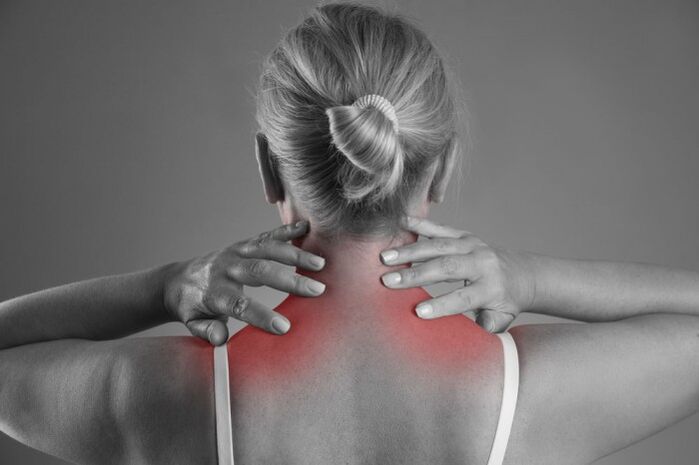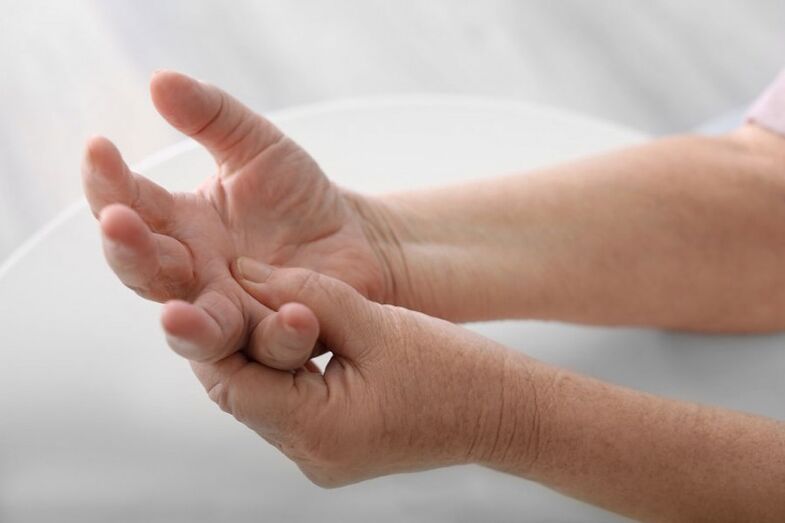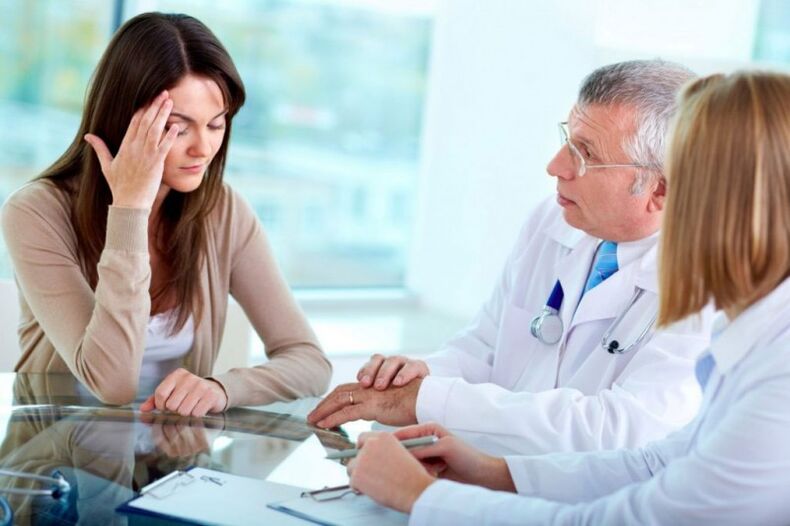
The life of a modern person is associated with the constant loads on which the spine is exposed. And while diseases of this vital organ used to be found mainly in adults and the elderly, today, according to medical statistics, the younger generation is increasingly facing such problems. It is a leader in the disease groupcervical osteochondrosis(SHOH). This is a great concern for a pathological person.
Therefore, it is worth learning about the causes of its appearance and methods of treatment.
What is cervical osteochondrosis
For a long time, most people try not to feel unpleasant discomfort in the neck area, which refers to the usual overwork and fatigue. However, over time, moving the head adds to the pain and other unpleasant symptoms. And only when the situation is critical, a person seeks medical help and learns that cervical osteochondrosis.
The disease affects both sexes equally. As already mentioned, today it is often found in many young people under 30 years of age. This phenomenon is mainly due to the introduction of computer technology in all spheres of life. People simply stop moving and spend most of their time connected to the monitor. As a result, pathological changes begin to occur in the cervical spine: the vertebrae move and the cartilage tissue, which represents a kind of layer between them, becomes thinner. In other words, excessive growth of connective tissue occurs when growths form in the vertebral body.
The result of such pathological changes is that the bone surfaces between the vertebrae come into contact with each other, causing friction and reducing the effect of squeezing nearby nerves and blood vessels. All these pathological changes lead to a deterioration of the blood supply to the back of the brain, which in turn leads to a deterioration in overall well-being and pain. If the problem is not solved in time, the disease will progress and in severe cases can lead to disability.
Causes of cervical osteochondrosis
The main causes of recent SHOC have always been associated with age-related changes in the body. However, in the realities of modern life, factors that increase the risk of pathological development at a younger age have emerged.
Some of these reasons are:
- sedentary lifestyle;
- being forced into a position (generally sitting);
- overweight;
- autoimmune diseases;
- drafts;
- stressful situations;
- injuries to the cervical or occipital region;
- congenital anomalies of the spine;
- disruption of metabolic processes.
In some cases, the disease develops as a result of hormonal disorders or unfavorable heredity.
Symptoms of cervical osteochondrosis
Unlike pathological processes in other parts of the spine, SHOX is more pronounced. This feature is explained by the fact that the vertebrae in the cervical spine are very close to each other, so the height of the intervertebral discs is small. This anatomical feature contributes to the compression of nerve tissue and blood vessels to a greater extent than in other parts of the spine. Therefore, the main symptoms of the disease are localized in the upper back, cervical region and head.
In this case, patients present the following complaints:
- restriction of neck mobility, especially if you want to turn your head;
- severe pain that often does not allow a person to make an elementary movement (bending, turning his head);
- characteristic crisis while moving;
- decreased sensitivity in the hands;
- violation of coordination of actions;
- dizziness;
- general weakness;
- decreased vision and hearing, tactile sensitivity, or taste perception.
The cervical spine consists of eight vertebrae, depending on the location of the dystrophic lesion, so there are specific symptoms of the disease. Sensitivity or mobility is usually impaired in these departments as a result of compression of the spinal roots. Therefore, cervical osteochondrosis is characterized by radical symptoms, ie which vertebra is involved in the pathological process.

Symptoms of cervical osteochondrosis can be as follows.
- first vertebra - decreased sensitivity and marked alignment of the occipital region and neck;
- second - pain in the back of the head and parietal region;
- third - pain in the neck, where the root is compressed, speech and taste perception are also impaired;
- fourth - pain in the shoulder, under the scapula, respiratory disorders can be observed;
- fifth - pain in the neck, spread to the shoulder;
- sixth - pain in the neck extends to the front and thumbs of the hand;
- seventh - pain in the scapular region, back shoulder, arm and fingers;
- eighth - the pain spreads from the neck to the shoulder and further to the lower fingers of the arm.
It should be noted that the diagnosis pays special attention to the scale of the lesion. Because this criterion determines the degree of cervical osteochondrosis. There are only four of them and they determine the severity of the pathological process.
Diagnosis of the disease
It should be noted that an experienced physician can easily diagnose cervical lumbar osteochondrosis during the initial examination, paying attention only to the characteristic clinical symptoms. However, it is recommended that the patient undergo a series of examinations to determine the extent of the damage and the prevalence of the pathology.Basically, all of these are hardware research methods. The diagnosis of cervical osteochondrosis includes:
- X-ray examination of the cervical spine. In the diagnostic process, the degree of damage, localization, salt deposits and the location of the spine are determined.
- Computed tomography - allows you to detect possible gaps, determine the height of the intervertebral discs, the location of compression of nerve tissue and spinal cord.
- MRI (magnetic resonance imaging) - provides an accurate image of pathological changes. Thanks to this type of examination, it is possible to accurately determine the condition of nerve fibers and the intensity of blood flow.
Often, one of these tests is enough to make a diagnosis. In most cases, doctors use a technique that has been proven for decades, namely X-rays.
Why is cervical osteochondrosis dangerous?
Any pathology of the spine is fraught with serious problems. After all, the spine is a kind of foundation on which the whole structure of the human body stands. Important blood lines pass through the cervical region, providing oxygen and nutrients to the brain. There are many nerve endings here. Therefore, disruption of innervation or blood supply to vital organs threatens serious consequences. Osteochondrosis of the cervical spine does not exaggerate this danger, as it causes serious consequences.

In addition to the perceived discomfort, the resulting vertebral defect leads to hearing loss and visual impairment. The brain with SCH suffers from a lack of oxygen. Therefore, cervical lumbar osteochondrosis is considered the most dangerous form of this disease.
To be sure, it is enough to list the most common complications of SHOX:
- persistent hypertension;
- chronic migraine;
- vegetative-vascular dystonia (VVD);
- respiratory problems;
- various perceptual disorders (taste, touch) that eventually become irreversible;
- Cardiovascular pathologies in which strokes are the most dangerous.
In advanced cases, patients develop vertebral artery syndrome, and prolonged compression of nerve roots leads to radiculopathy. Changes in the structure of the vertebrae can subsequently lead to a complete loss of neck mobility. However, the most serious complication of cervical osteochondrosis is death, which leads to compression of the spinal cord.
Given the severity of the condition and the possibility of complications, you should seek medical attention immediately if alarming symptoms appear. Such unpleasant symptoms may include: systemic headache, dizziness, discomfort in the neck or back of the head. After diagnostic measures, the doctor will choose the appropriate therapy.
Treatment of patients with SHS is generally complicated. Therapy includes mandatory massage, therapeutic gymnastics, physiotherapy procedures. Of course, it is impossible to improve the patient's condition without the use of medication.Therefore, the drug treatment complex for osteochondrosis includes:
- analgesics;
- nonsteroidal anti-inflammatory drugs;
- chondroprotectors;
- muscle relaxants, means of relieving muscle tension;
- definitely prescribed a vitamin complex.
All therapy is selected by a specialist, taking into account the individual characteristics of the patient. Any self-medication for cervical osteochondrosis is unacceptable. All of these drugs are aimed at the localization of symptoms in the acute phase of the disease. Other methods are relevant during remission. Treatment is usually at home, ie in an outpatient setting. However, especially in severe cases, the patient is hospitalized.
Traditional methods of treatment
Doctors are always ready to complete the complex of treatment with natural drugs based on folk recipes. Various infusions, infusions help to stop inflammation and relieve pain.

Here are some recipes for alternative treatment of osteochondrosis:
- Fennel seeds (200 g) should be poured with vodka (250 ml) or alcohol diluted in half with water. After two weeks of infusion, it is recommended to take one tablespoon infusion on an empty stomach three times a day.
- Means for external use are prepared in the following sequence: lilac leaves (fresh) should be made into a thin mass, 300 ml of radish juice (black) should be added to them, then 200 g of good honey should be added to the mass. It is necessary to insist on the composition of the whole day in a dark place. It can then be used to rub the problem area. It is recommended to use this product after consulting a doctor. Contraindicated for those who are allergic to the composition.
- You can prepare an infusion of lilac flowers for internal use. To do this, take a spoonful (spoonful) of fragrant flowers, pour a glass of boiling water, strain for an hour and take 1 liter three times. Art.
It is important! The prescribed dose should be strictly adhered to when taking all herbal medicines.
Gymnastics for cervical osteochondrosis at home
It makes sense to talk about the therapeutic gymnastics complex with SHH only after stopping the acute period. As the disease progresses, such activities may aggravate the situation.
All physiotherapy exercises are aimed at maintaining normal mobility in the cervical spine. Classes are held in a calm rhythm, there should be no sudden movements. If you feel tired or in pain, classes are stopped immediately. The complex includes the following exercises that you can do regularly at home:
- When standing and breathing, you should bend your head so that your chin touches your chest. As you breathe in, your head slowly pulls back. The same exercise can be done freely while sitting in a chair.
- It is convenient to do head movements in any starting position. It is better to change the direction of movement from time to time so that your head does not turn. It is recommended to perform the exercises in a slow rhythm.
- Regular performance of this exercise will help to strengthen the cervical muscles perfectly: you need to "lock" your hands and press your forehead to them as much as possible. Repeat this exercise three times in 30 seconds to get a lasting effect. Alternatively, you can apply by pressing your palms to your forehead and then squeezing your forehead into your palms.

There are many other effective methods, but any option can be used only with the consent of the doctor.
To prevent a diagnosis history "cervical osteochondrosis», You should lead an active life, exercise regularly in the morning, paying attention to your neck, and properly equip your workplace.

















































